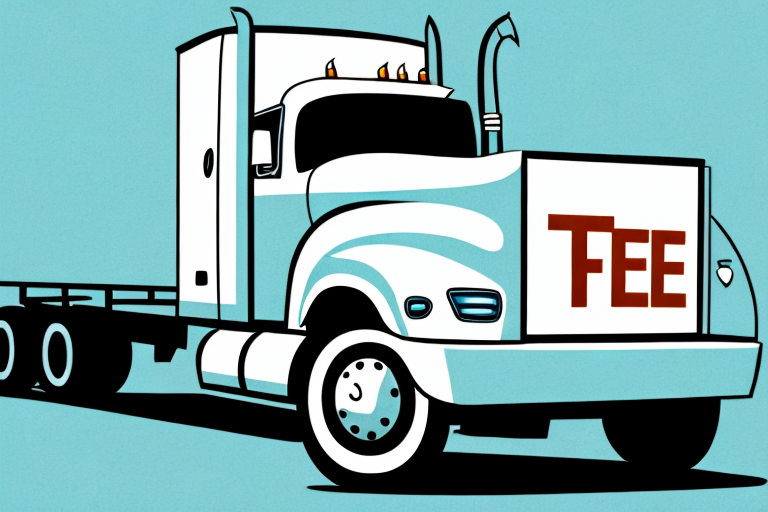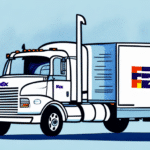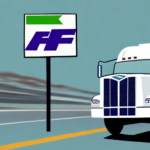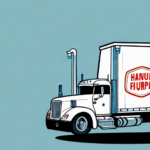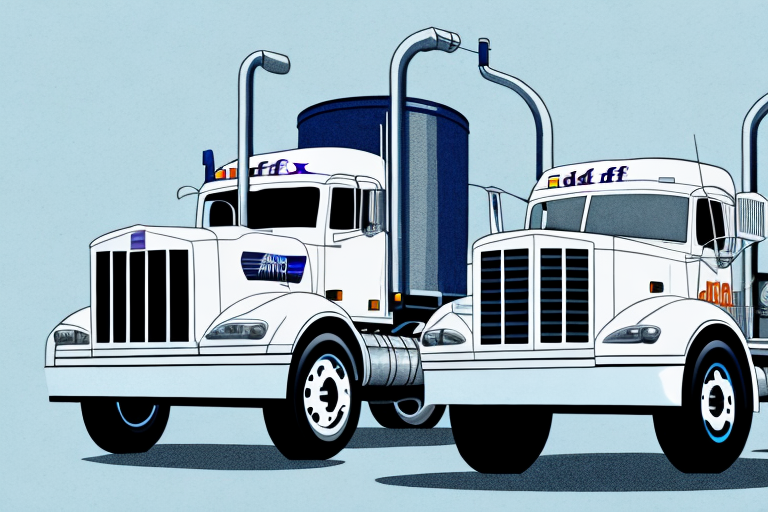Understanding the Clean Truck Fee and Its Impact on the Supply Chain
The Clean Truck Fee is a surcharge imposed on trucks that fail to meet specific environmental standards at major ports across the United States. This fee is a cornerstone of the Clean Truck Program, designed to mitigate the environmental footprint of diesel trucks on the supply chain and adjacent communities. This article delves into the intricacies of the Clean Truck Fee and examines its broader implications for the supply chain.
What is the Clean Truck Fee and Why Was it Implemented?
The Clean Truck Fee is levied by major U.S. ports on trucking companies whose vehicles do not comply with established environmental standards. Introduced as part of the Clean Truck Program, the fee aims to diminish the adverse environmental effects of diesel trucks by encouraging the adoption of cleaner technologies.
Implemented in response to escalating concerns over air pollution and its detrimental effects on public health and the environment, the program has achieved significant milestones. According to the Environmental Defense Fund, the Clean Truck Program has facilitated a 90% reduction in diesel particulate matter emissions and a 50% reduction in nitrogen oxide emissions since its inception. These reductions have not only enhanced air quality for neighboring communities but have also contributed to climate change mitigation efforts.
The Environmental Impact of Diesel Trucks on the Supply Chain
Diesel trucks are a major source of environmental pollution, emitting harmful substances such as nitrogen oxides (NOx) and particulate matter (PM). These pollutants are linked to respiratory ailments and other health issues, posing significant risks to public health. Additionally, diesel trucks contribute to climate change through the emission of greenhouse gases.
To address these challenges, the industry is transitioning to alternative fuels like biodiesel and electric power. Biodiesel, derived from vegetable oils or animal fats, emits fewer pollutants compared to traditional diesel. Meanwhile, electric trucks, powered by batteries or hydrogen fuel cells, offer zero-emission alternatives and are gaining traction within the transportation sector.
Enhancing supply chain efficiency is another strategy to reduce the environmental impact of diesel trucks. Improved route planning, minimizing empty miles, and optimizing cargo space usage can lead to fewer trucks on the road, thereby decreasing overall emissions.
An Overview of the Clean Truck Program in Major US Ports
The Clean Truck Program is an extensive initiative targeting the reduction of diesel truck emissions in significant U.S. ports. Key components of the program include the Clean Truck Fee, emission reduction strategies, technical assistance, and collaboration among ports, carriers, and other stakeholders.
One of the program's primary achievements is the substantial decrease in harmful air pollutants like NOx and PM, which are detrimental to public health. By incentivizing the use of cleaner trucks, the program enhances air quality and safeguards the well-being of nearby communities.
Economically, the Clean Truck Program offers benefits by promoting the adoption of newer, more efficient trucks. This transition can lead to reduced fuel costs for carriers and trucking companies, thereby increasing competitiveness and profitability. Additionally, the program helps lower the overall costs associated with goods movement in and out of major U.S. ports.
The Benefits of Clean Trucks for the Supply Chain and Communities
Adopting clean trucks yields numerous advantages for both the supply chain and local communities. Reduced emissions from clean trucks lead to improved air quality, mitigating the health risks associated with diesel pollution. Moreover, by lowering greenhouse gas emissions, clean trucks play a crucial role in combating climate change.
From a business perspective, clean trucks often boast greater fuel efficiency, resulting in long-term fuel cost savings. Furthermore, various cities and states offer incentives such as tax credits or grants for businesses utilizing clean trucks. These incentives not only reduce operational costs but also encourage environmentally responsible practices.
How Emission Reduction Strategies are Driving Changes in the Trucking Industry
Beyond the Clean Truck Program, the trucking industry is embracing several emission reduction strategies to enhance environmental performance. The adoption of alternative fuels and technologies, including electric and hybrid vehicles, is paramount. Additionally, advancements in diesel engine efficiency through design improvements contribute to lower emissions.
Logistics optimization is another critical strategy. By refining route planning and minimizing empty miles, trucking companies can significantly reduce fuel consumption and emissions. Advanced software and data analytics enable companies to identify the most efficient routes, thereby decreasing both environmental impact and operational costs.
Examining the Costs and Challenges of Implementing Clean Truck Programs
Transitioning to cleaner vehicles and technologies poses financial challenges, particularly for smaller carriers and trucking companies with limited resources. The initial investment required for new equipment can be a significant barrier. However, the long-term cost savings from reduced fuel consumption, lower maintenance expenses, and potential fee reductions related to regulatory compliance can offset these initial costs.
Infrastructure limitations also present challenges. The widespread adoption of electric trucks, for instance, necessitates the availability of charging stations, which may be scarce in certain regions. Additionally, maintaining clean trucks often requires specialized technicians and equipment, which might not be readily accessible. Overcoming these infrastructure hurdles is essential for the successful implementation of clean truck programs.
The Role of Technology in Supporting Clean Truck Programs
Technological advancements are instrumental in the evolution of clean truck programs. Innovations in battery technology and electric motors are making electric and hybrid trucks more feasible for widespread use. Fuel cell technology is also being explored as a means to further reduce emissions in the trucking industry.
Moreover, technology aids in monitoring and optimizing truck performance to minimize emissions. Telematics systems track metrics such as fuel efficiency, speed, and idle time, enabling carriers to pinpoint areas for improvement. Advanced software analyzes this data to offer insights and recommendations for route optimization and fuel consumption reduction.
Best Practices for Businesses to Comply with Clean Truck Regulations
Ensuring compliance with clean truck regulations requires a strategic approach. Businesses should invest in clean vehicles and technologies, establish partnerships with carriers and other stakeholders, and utilize technical assistance and resources provided by regulatory agencies and industry organizations.
Implementing robust maintenance and inspection programs is also crucial. Regular maintenance ensures that trucks operate efficiently and emit fewer pollutants, helping businesses avoid fines and penalties associated with non-compliance.
Beyond regulatory compliance, businesses can adopt sustainable transportation practices such as optimizing delivery routes, utilizing alternative transportation modes like rail or waterways, and encouraging employees to use public transportation or carpooling. These practices not only reduce emissions but also enhance operational efficiency and cost-effectiveness.
Collaboration between Shippers, Carriers, and Ports to Achieve Cleaner Shipping Operations
The effectiveness of clean truck programs hinges on the collaborative efforts of shippers, carriers, and ports. By pooling resources, expertise, and best practices, these stakeholders can work towards cleaner shipping operations and a reduced environmental impact on the supply chain. Collaborative initiatives may include setting emission reduction targets and developing joint strategies to achieve them.
Embracing new technologies and innovations is another facet of this collaboration. For example, the adoption of alternative fuels like electric or hydrogen-powered trucks can significantly cut emissions. Joint investments in and deployment of such technologies can drive industry-wide environmental improvements.
A Look at Successful Clean Truck Programs in Other Countries
International examples provide valuable insights into the implementation of effective clean truck programs. Countries such as those in the European Union, Japan, and China have initiated programs to curb the environmental impact of diesel trucks within their supply chains.
In the European Union, stringent emissions standards coupled with financial incentives for electric and hybrid trucks have led to significant reductions in air pollution and enhanced public health across member states.
Japan's clean truck initiatives focus on promoting the use of natural gas and other alternative fuels through subsidies, resulting in lowered emissions and improved air quality in urban areas.
These successful programs offer a blueprint for U.S. ports and stakeholders, highlighting best practices that can be adapted to enhance the effectiveness of clean truck programs in the United States.
Future Trends and Innovations in Clean Transportation for the Supply Chain
Looking ahead, several trends and innovations are poised to transform the supply chain and the transportation industry. The continued development of electric and hybrid vehicles, advancements in autonomous driving technology, and the increasing adoption of alternative fuels such as hydrogen and biofuels are set to play pivotal roles.
Staying informed about these developments will enable stakeholders to ensure that clean truck programs remain effective and responsive to emerging environmental and technological challenges. Embracing these trends will not only enhance the sustainability of the supply chain but also drive economic and operational efficiencies.















